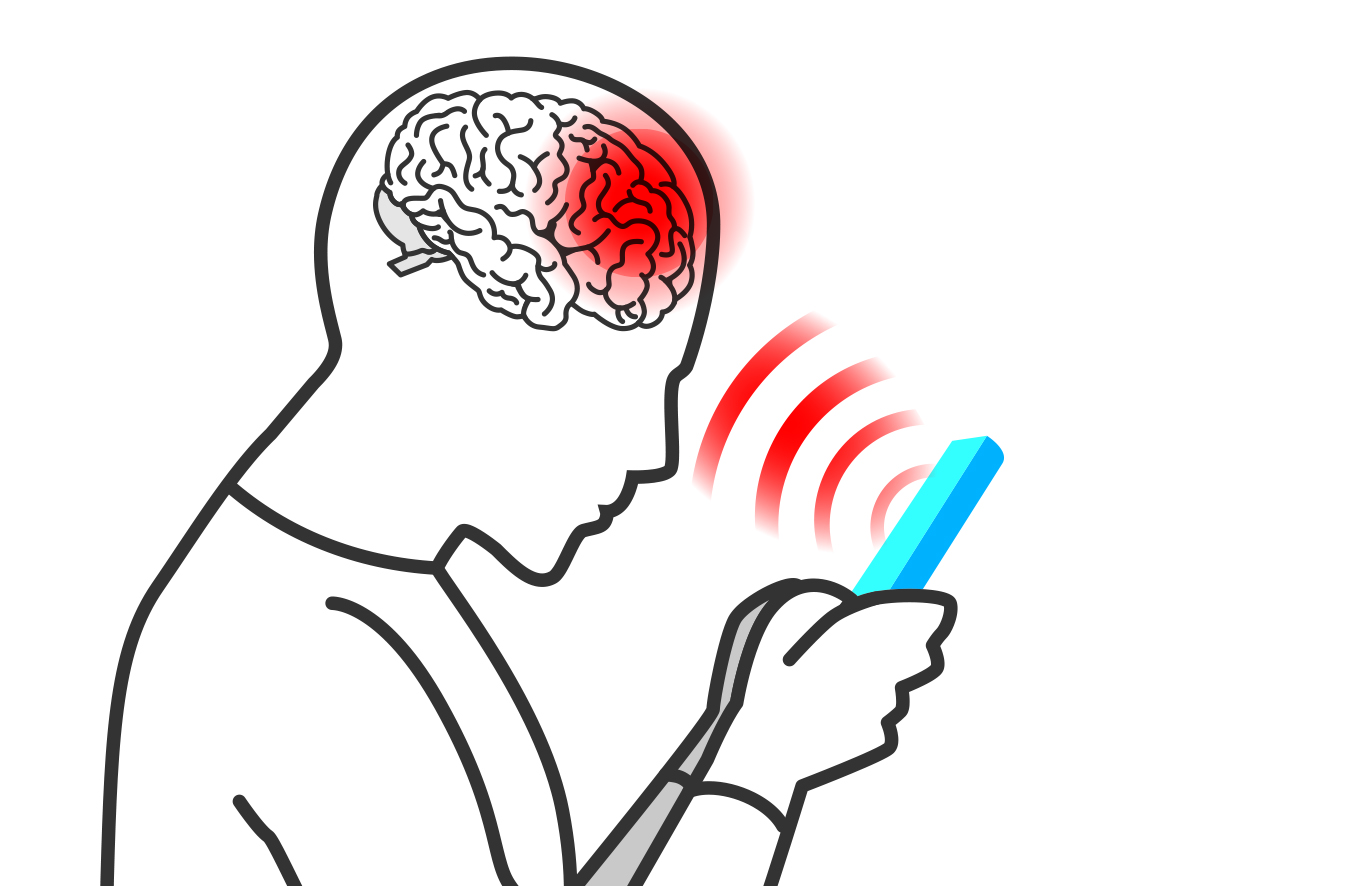Cell phones. They have become an indispensable part of our lives. According to Pew Research, 95 percent of Americans own a cell phone, with 100 percent of those surveyed between the ages of 18 and 29 having a mobile phone of their own. With the average American checking their phone 46 times a day, as reported by a 2015 Deloitte study, and 51 percent of the population also owning a tablet, it is fair to say that we spend an awful lot of our time using our mobile devices.
It is no secret that both cell phones and tablets produce a small amount of radiation. On the most basic level, cell phones work by emitting and receiving radio frequency waves, a form of low-level radiation, through their antennae, which are bounced back and forth from your phone to nearby cell phone towers. Because those RF waves are directly next to the head when making a call, or adjacent to other vital body parts when a device is kept in a user’s pocket, it seems prudent to make sure that they don’t pose any health risks.

While the debate on the potential dangers of cell phones has been gathering steam in recent years, the embers of concern have been smoking steadily for quite a while. In 2007, environmental health expert Dr. Devra Davis slammed tobacco industry insiders for downplaying the risks of cigarette smoke in order to maximize profits. She then took her research into cancer caused by environmental factors one step further, delving into the cell phone industry – with alarming results. Her 2010 book Disconnect charged the trillion dollar telecommunications industry with suppressing frightening data on how cell phone radiation from RF waves was able to penetrate the human brain.
At first, Davis refused to accept that her cell phone could possibly be connected to brain cancer, as reported by Time. “I couldn’t believe it and I didn’t want to,” she said. “These were attractive devices. Cell phones were like cars; you couldn’t imagine life without them.”
But during the course of her research, Davis saw behaviors that mirrored the tobacco industry’s attempts to hide evidence that smoking caused lung cancer. She encountered several scientists who were denounced by the telecommunications industry after their independent studies found that cell phones emitted radiation that far exceeded recommended levels and identified government efforts to cloud the issue with questionable data. She also discovered evidence going back decades proving that cell phones could pose devastating health risks. Davis categorized her findings as possibly “the most important and unrecognized public health issues of our times.”
Despite the lack of hard scientific evidence tying cell phones to cancer in humans, the Italian Supreme Court issued a landmark ruling in 2013 citing a “causal link” between cell phone use and brain tumors in the case of 60-year-old Innocente Marcolini. The Italian businessman had used a cell phone for at least five hours a day over a 12 year period and had developed a non-cancerous but still life threatening tumor. The tumor was located in his trigeminal nerve, right near the spot where his cell phone would touch his head when he used his phone, reported Business Insider.
The Marcolini case was significant as the first to establish a direct link between brain cancer and cell phone usage. Then, in March 2016, Berkeley, California made its way into history books when it became the first city in the United States to require cell phone retailers to post signs warning of certain risks associated with cell phones. The advisories alerted customers that they could potentially be exposed to radiation that exceeded federal guidelines if they kept a phone connected to a wireless network in their pocket or next to their skin.
One year later, a court order forced public health officials in California to issue similar guidelines at the state level, advising cell phone users to limit the amount of time they held their phones next to their heads, to use their speakerphones whenever possible and to keep cell phones away from their bodies.
A 2017 Consumer Reports article reported that a study by the National Toxicology Program established a direct link between cell phone radiation and cancer in laboratory rats. Whether or not humans are affected by the radiation in the same way as rats is still up for debate, but studies in rats and mice have long proven to fairly accurate barometers of how a particular agent can affect humans.
Despite the findings of the National Toxicology Program’s study, the telecommunications industry continues to hold fast to its position that there are still no proven links between cell RF wave and humans. In June 2014 Centers for Disease Control advised caution on cell phone usage, particularly in children, despite the lack of scientific evidence linking cell phones to cancer. Interestingly enough, CDC retracted those warnings just two and a half months later saying that more research was needed before any recommendations could be issued. The general lack of clarity on the issue has prompted many to advise cell phone users to use their phones judiciously while taking simple steps to reduce their exposure to the RF waves that emanate from both phones and tablets.
While there is plenty of disagreement on the topic of cell phone safety, almost everyone agrees that children are particularly vulnerable to cell phone emissions because of their smaller stature and thinner bones, which allow radio waves to penetrate farther into their heads.

According to Haaretz, Israeli researchers displayed concern about cell phone usage in children as far back as 2008, saying that not only were they in greater danger of developing cell phone related tumors, but that their risks were further elevated because growing up in the age of cell phones they are expected to use a mobile device for many more years than their parents. A 2102 bill passed by the Knesset required all cell phones to carry labels warning that using and carrying a cell phone next to the body could increase the risk of cancer, particularly among children.
Studies done in Switzerland and France have shown that the bone marrow in a child’s head can absorb ten times the amount of radiation than that of an adult, with even greater amounts in infants and toddlers. And with mounting evidence that RF waves can disrupt a child’s developing brain, the argument to limit or completely restrict children’s cell phone time grows ever stronger.
Looking ahead, advocates like Dr. Davis hope that the cell phone industry will take concrete steps to improve cell phones by creating devices that work safely with the way people actually use them, in their pockets and directly next to their heads.
“Manufacturers have an obligation to identify and reduce risks and to design phones that can be held safely next to the body,” noted Davis in an article that appeared on the Environmental Health Trust website. “If they do so, our children and grandchildren will not look back on us in shock at the disconnect between what science told us about cell phone radiation and how we used them, but with gratitude that we took simple steps to protect them.”

According to Dr. Mehmet Oz, the average American spends 195 minutes a day using their mobile device. Consider the following ways to minimize radiation risks associated with cell phones or tablets:
You must be logged in to post a comment.